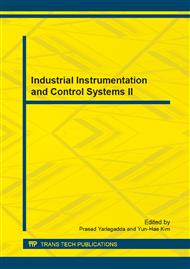[1]
S P Timoshenko.On the correction for shear of the differential equation for transverse vibrations of prismatic bars. The London, Edinburgh, and Dublin Philosophical Magazine and J. of Sci., 1921, XLI(245), pp.744-746.
DOI: 10.1080/14786442108636264
Google Scholar
[2]
B F Friberg, F E Richart, R D Bradbury. Load and deflection characteristics of dowels in transverse joints of concrete pavements. 18th Highway Research Board, National Research Council, 1938, pp.156-157.
Google Scholar
[3]
B F Friberg. Design of dowels in transverse ioints of concrete pavements. Transactions of the American Society of Civil Engineers, 1940,195(1), pp.1076-1095.
DOI: 10.1061/taceat.0005221
Google Scholar
[4]
A M Tabatabaie, E J Barenberg. Structural Analysis of Concrete Pavement Systems. Transportation Engineering Journal, 1980,106(5), pp.493-506.
DOI: 10.1061/tpejan.0000873
Google Scholar
[5]
A M Tabatabaie, E J Barenberg. Finite-element analysis of jointed or cracked concrete pavements. Transportatioan Research Board,1978,5, pp.11-19.
Google Scholar
[6]
S R Maitra, K S Reddy, L S Ramachandra. Load Transfer Characteristics of Dowel Bar System in Jointed Concrete Pavement. Journal of Transportation Engineering, 2009, 135(11), pp.813-821.
DOI: 10.1061/(asce)te.1943-5436.0000065
Google Scholar
[7]
P.Cao D.C. Feng,L.Tian.Research on cracking evolution cement stabilized base course during maintaining period based on elastic-plastic damage mechanics. Engineering Mechanics, pp.99-102,June,2011.
Google Scholar
[8]
S Srinivasah. Characterization of stresses induced in doweled joints due to thermal and impact loads. Virginia : West Virginia University ,2001 .
DOI: 10.33915/etd.1208
Google Scholar
[9]
J Kim. Three–dimensional finite element analysis of multi-layered system: Comprehensive nonlinear analysis of rigid airport pavement systems. Department of Civil Engineering, University of Illinois at Urbana-Champaign, 2000.
Google Scholar
[10]
W G Davids, Z Wang, Y G Turkiy, et al. Three- -Dimensional Finite Element Analysis of Jointed Plain Concrete Pavement with EverFE 2.2. Transportation Research Board, 2003,1853, pp.92-117.
DOI: 10.3141/1853-11
Google Scholar
[11]
G W William, S N Shoukry. 3D finite-element analysis of temperature-induced stresses in dowel jointed concrete pavements. International Journal of Geomechanics, 2001,1(3), pp.291-307.
DOI: 10.1061/(asce)1532-3641(2001)1:3(291)
Google Scholar
[12]
J R Keeton, J A Bishop. Load Transfer Characteristics of A Dowelled Joint Subjected to Aircraft Wheel Loads. Washington D C :Highway Research Board, 1957, pp.190-198.
Google Scholar
[13]
H Guo. Sherwood J.A. Snyder M B.Component dowel-bar model for load transfer systems in PCC pavements. Journal of Transportation Engineering,ASCE,1995,121(3), p.289~298.
DOI: 10.1061/(asce)0733-947x(1995)121:3(289)
Google Scholar
[14]
M I Hammons, I M Anastosios. Developments in Rigid Pavement Response Modeling. Technical Report, US Army Corps of Engineers, 1996,8.
Google Scholar
[15]
I S Eom, I D Parsons, H Keith. Nonlinear Analysis of the Load Transfer Mechanism in Rigid Pavement Systems Considering Various Interface Conditions. Department of Civil Engineering, University of Illinois at Urbana-Champaign, 2000,12.
Google Scholar


